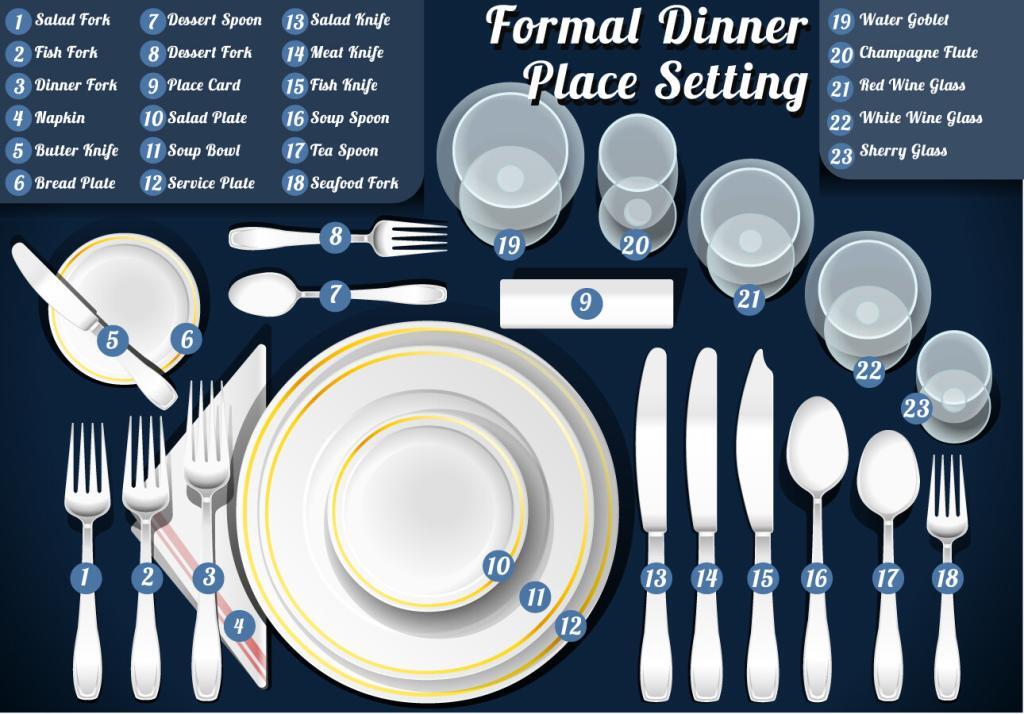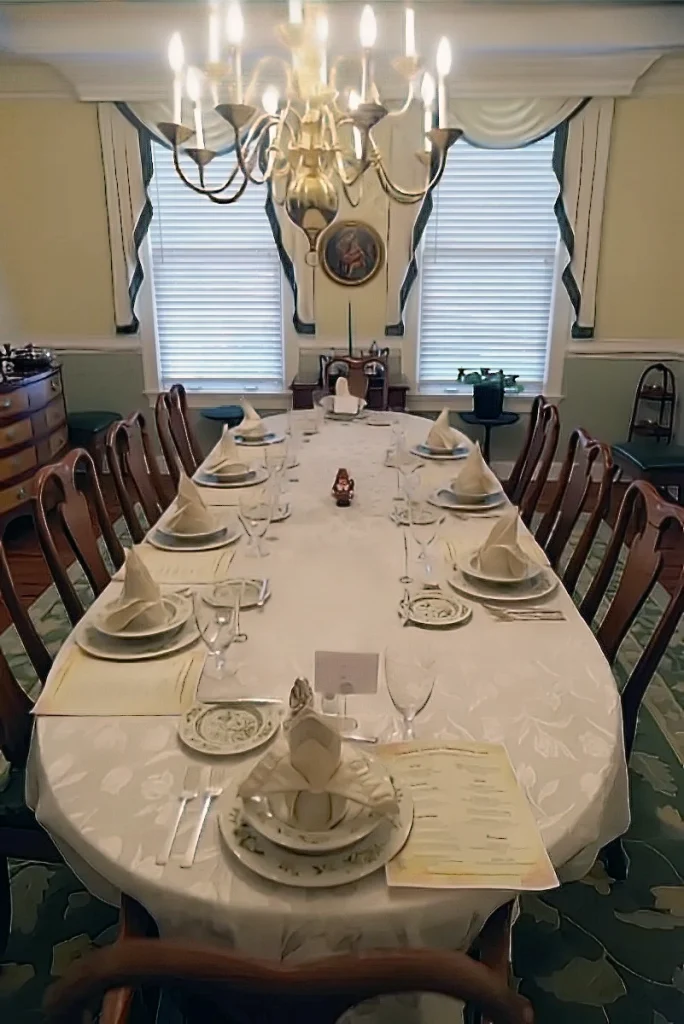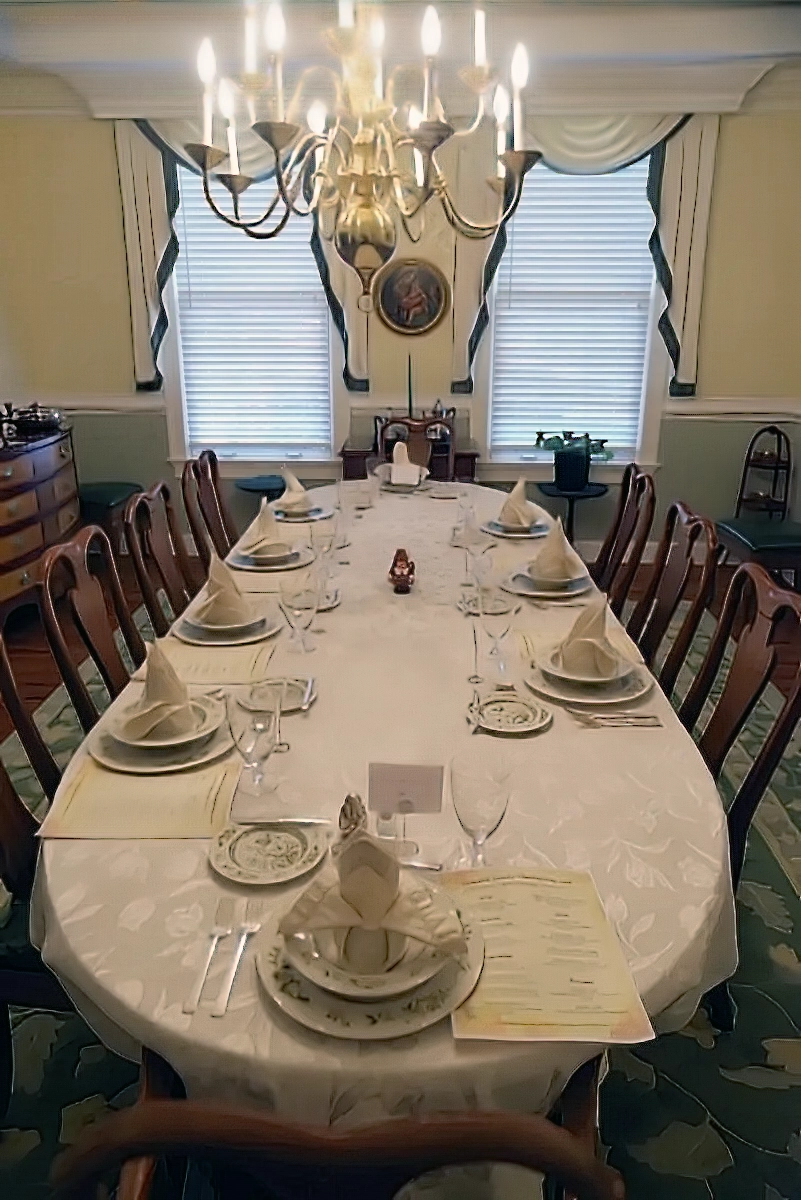The Formal Table Setting – If you follow these four critical manners religiously, you are 90% there. Oh, and ALWAYS say “Please” and “Thank you.” You will be surprised at how always doing these will elevate how others see you and make your parents (and your children) proud.
To avoid clutter, the general rule for any table setting is to include no more than three utensils on either side of the dinner plate at a time. The exception is the oyster (or seafood) fork, which may be placed to the right of the last spoon, even when it is the fourth utensil to the right of the plate. A full formal table setting looks like this:

Service Plate
- Place the service plate in the center of the place setting.
Butter Plate
- A small bread plate is placed above the forks, above and to the left of the service plate.
Glasses
- Water Glass. The water goblet is placed above each guest’s dinner knife. The other glasses are then arranged around the water glass as follows:
- Champagne Glass. A champagne flute may be between the water and wine glasses.
- Red Wine Glass. Red wine glasses have a wider globe and may be cupped in the palm of your hand if you choose.
- White Wine Glass. The glass with a longer stem and cylindrical globe is the white wine glass. White wine glasses should only be held by the stem.
- Sherry/Port Glass. A small sherry/port glass may also be present to the right of the wine glasses. This may signal that sherry will be served with the soup course.
Forks
- Salad Fork. Directly to the plate’s left. One (1) inch from the plate.
- Dinner Fork. Left of the salad fork.
- Fish Fork. On the dinner fork’s left.
- Dessert Fork. Directly above the serving plate.
- Seafood Fork (also called an Oyster Fork). Right of the teaspoon, the soup (or fruit) spoon.
- The only fork placed on the right side of the place setting.
- The fork tines are placed in the bowl of the soup spoon with the handle at a 45-degree angle.
- It may also be laid beside the soup spoon in a parallel position.
Knives
- Salad Knife. Directly to the right of the plate. One (1) inch from the plate.
- Dinner Knife. (Or meat knife if meat will be served.) Directly to the right of the plate if no salad knife; otherwise, directly to the right of the salad knife. One (1) inch from the plate.
- Fish Knife. On the dinner knife’s right.
- Butter Knife. On the butter plate, diagonally with the handle toward the guest.
Spoons
- Soup Spoon and/or Fruit Spoon. Right of the knives.
- Dessert Spoon. Directly above the dessert fork above the serving plate.
Dessert Spoons and Forks
- A dessert fork and/or spoon may be placed horizontally above the dinner plate.
- These utensils may also be provided when dessert is served.
Salt and Pepper
- Salt Shaker. The salt shaker is placed to the right of the pepper shaker.
- Pepper Shaker. The pepper shaker is to the left of the salt shaker and is angled slightly above the salt shaker.
- Salt and Pepper Shakers. They are placed above the cover or between two place settings.
- Salt Cellars. At formal affairs, salt is always applied from a salt cellar, which provides controlled use of salt. A small spoon is presented in the salt cellar and used to sprinkle salt over food.
Finger Bowls
- Finger bowls may be placed on the table at the end of the meal.

Three-Course Formal Setup for nine guests at the Campbell’s
